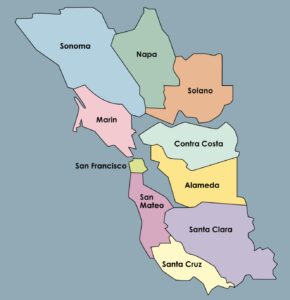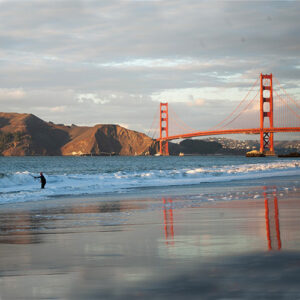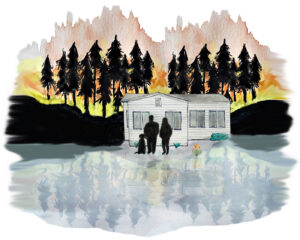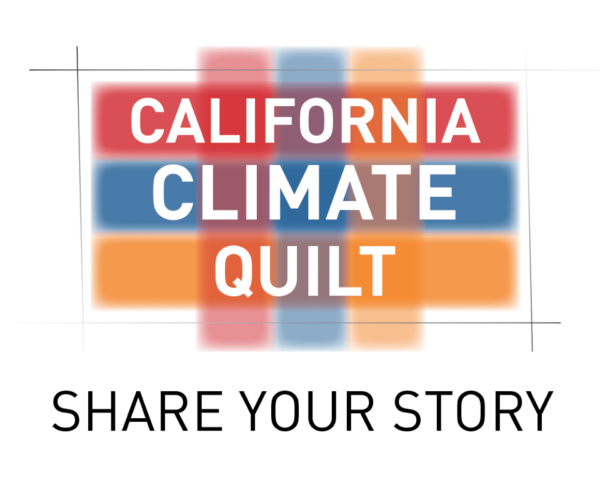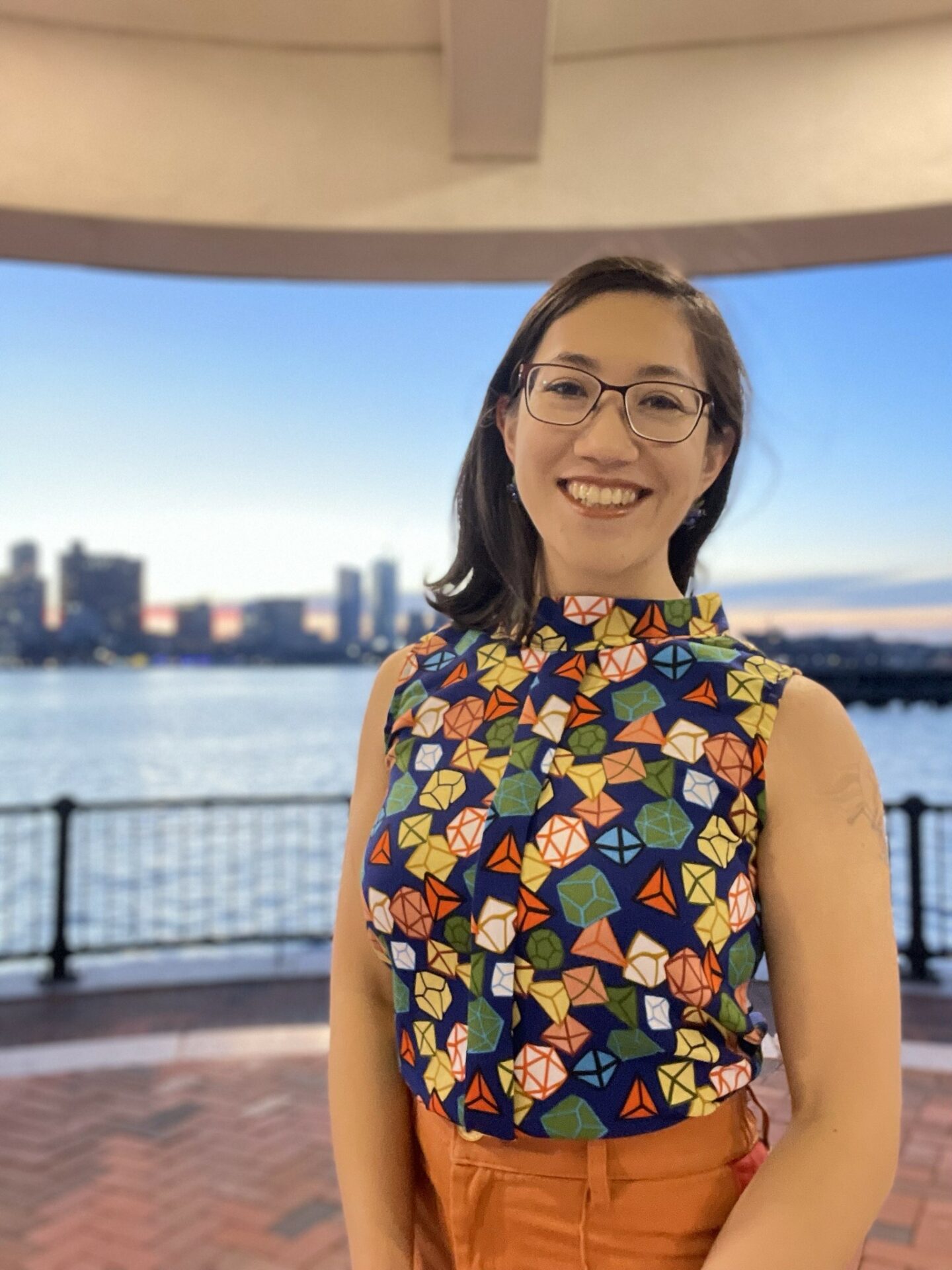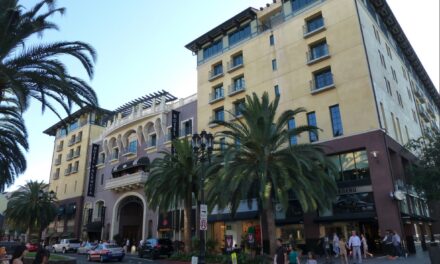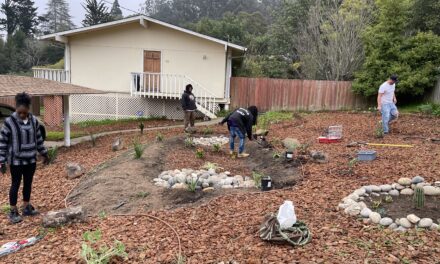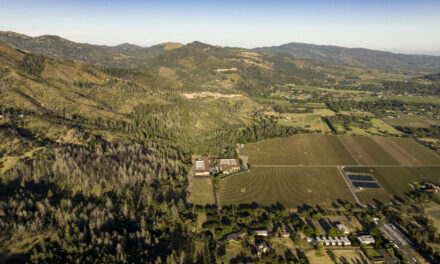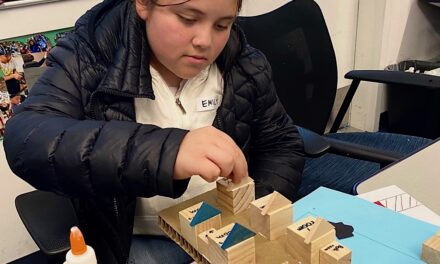Behind the Scenes in Game Design
KneeDeep interviewed Marcy Brown, master of “Death by a Thousand Breaths,” about what went into her thinking in designing a 90-minute, live action role-playing Dungeons and Dragons game called Cerulean Port City. The game took place at the Exploratorium on July 30th. Players were asked to collaborate, solve puzzles, and craft solutions to fix the fantasy city’s air pollution issues.
Q: What does Cerulean Port City look like?
A: Cerulean Port City is a mid-sized town with a bustling harbor, where cultures intermingle and exchange, where the power of the elemental forces of earth, sea, and sky are heightened in their proximity and harmony to one another, where magic and technology work in tandem. It’s a lively but peaceful town where everyone is welcomed and ancestral ways of knowing and being are honored.
Q: Why choose a port city — like the Bay Area — as a setting?
A: For many of our Gaming for Justice adventures, the setting is based on Oakland at different times throughout history, with fantasy elements added to create a world that feels familiar and not at the same time. There will be plants, places, or even events that may be recognizable, but the scenarios are unique. What I love about port cities is their diversity and the heightened potential energy inherent to these places of exchange. Whether that is goods, culture, or people seeking new experiences by departing or arriving, the sense of novelty and excitement is renewed again and again.
Q: Can you share a few threads of activity you see happen in live-action gaming?
A: As they move through the story, we’ll see players define what justice and accountability look like to them. That will change how they approach challenges and set goals. We’ll also see how the players identify their values and collaborate with others, potentially finding areas of compromise and ways to be creative.
Q: What does environmental justice have to do with climate resilience, and how can storytelling and gaming help empower youth?
A: Climate resiliency is not possible without environmental justice, as it is BIPOC (Black and Indigenous People of Color) communities who are most impacted by climate change. People who have been historically oppressed, or who are currently marginalized, bear the brunt of extreme weather, natural disasters, public health crises, and more caused by climate change.
Storytelling and gaming, specifically role-playing, have the power to inspire action and build community. Storytelling is how we first made sense of the world around us, and understand our place in it. When we weave stories and play together, we create possibilities, learn how to work collaboratively and creatively, find strengths within ourselves and each other, and see ourselves represented. Through gaming and playing together, we create space to be silly, have fun, fight our fears, and dream, and that kind of free visioning is a very powerful thing in a world that can seem dark and overwhelming.
Q: How did you get into this work and why do you do it?
A: I’ve loved writing from a young age, but shelved that passion to focus on a more science-y path, which led me to the field of outdoor education, where I basically get to encourage people to create connections to the places they inhabit. I worked one season as an education technician for a national park, and while in that position I learned more about the intersection of play and education. I was given the freedom to create new ways to incorporate curriculum into our programs, and I created my first games for youth! I had never felt so inspired or creative before in my life.
I got into Dungeons and Dragons during the pandemic as a way to socialize with my friends, and it very quickly consumed all my time once I realized what an incredible vehicle it is for expression, dreaming, and collaborating with others. I’m inspired every day by the people I get to be a Dungeon Master for and the party members I get to play with, especially the youth, who do not impose restrictions on themselves like adults have been socialized to.
Other Recent Posts
Learning the Art of Burning to Prevent Wildfire
In Santa Rosa’s Pepperwood Preserve, volunteers are learning how controlled fires can clear out natural wildfire fuel before it can spark.
Martinez Residents Want More Than Apologies — They Want Protection
After a 2022 release of toxic dust and a February 2025 fire, people in the northeast Bay town are tired of waiting for safety improvements.
Weaving Fire Protection Out Of What’s Already There
A new Greenbelt Alliance report shows how existing vineyards, grasslands, and managed forests can slow wildfire and save vulnerable homes.
Fall Plantings Build Pollinator Habitats in Concord
Community groups, climate advocates and a church are coming together to plant pollinator gardens as monarchs, bees see population declines.
Newark Needs Housing, But Could Shoreline Serve A Higher Purpose?
The Bay Area needs more affordable housing, but would 196-homes or a buffer against sea level serve local needs better in the years ahead?
Who Will Inherit the Estuary? Training for a Rough Future
The six-month program teaches students aged 17 -24 about the challenges facing communities around the SF Estuary, from Stockton to East Palo Alto.
Split Verdict Over State of the Estuary
Habitat restoration and pollution regulations are holding the Bay steady, but the Delta is losing some of its ecological diversity, says SF Estuary Partnership scorecard.
Volunteers Catch and Release Tiny Owls For Science
In Santa Rosa, citizen scientists capture northern saw-whet owls to help further research on climate impacts to the bird.
Antioch Desalination Plant Could Boost Local Water Supply
The $120 million plant opened this fall and treats 8 million gallons of brackish water a day, 75% of which is drinkable.
How Cities Can Make AI Infrastructure Green
Data centers fueling AI can suck up massive amounts of energy, water and land, but local policies can mitigate the impact.
KneeDeep will report on this event in an upcoming August 2022 story.

